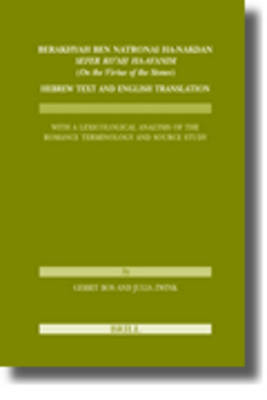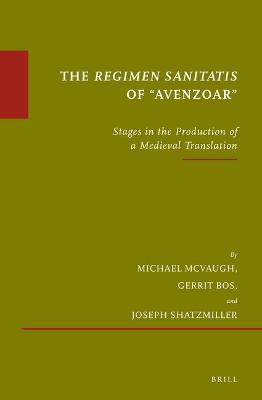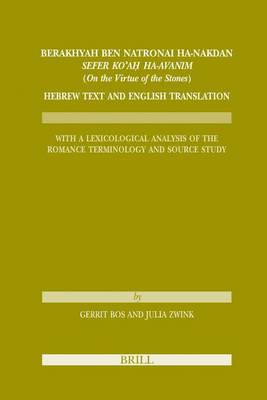Etudes sur le judaisme medieval
2 primary works • 5 total works
Book 40
The lore of the supposed magic and medical virtue of stones goes back to the Babylonians and peaks out in the lapidary literature of the Middle Ages. The famous work of Marbode of Rennes, which made lapidaries a very popular type of medieval scientific literature, was translated into numerous vernacular languages. The Jewish tradition, missing a particular lapidary literature of its own, absorbed non-Jewish works like that of Marbode. Several Anglo-Norman Marbode translations could be identified as the main source of the present edited Hebrew lapidary Ko'ah ha-Avanim, written by Berakhyah Ben Natronai ha-Nakdan around 1300. The edition is accompanied by an English translation, a source study, and a linguistic analysis of the Romance, mostly Anglo-Norman, terms featuring within the text in Hebrew spelling.
Book 79
The Regimen sanitatis of "Avenzoar"
by Michael R. McVaugh, Gerrit Bos, and Joseph Shatzmiller
Published 25 July 2019
The authors publish a previously unedited Regimen of Health attributed to Avenzoar (Ibn Zuhr), translated at Montpellier in 1299 in a collaboration between a Jewish philosopher and a Christian surgeon, the former translating the original Arabic into their shared Occitan vernacular, the latter translating that into Latin. They use manuscript evidence to argue that the text was produced in two stages, first a quite literal version, then a revision improved in style and in language adapted to contemporary European medicine. Such collaborative translations are well known, but the revelation of the inner workings of the translation process in this case is exceptional. A separate Hebrew translation by the philosopher (also edited here) gives independent evidence of the lost Arabic original.
The Regimen Sanitatis of "Avenzoar"
by Michael R. McVaugh, Gerrit Bos, and Joseph Shatzmiller
Published 8 July 2019



